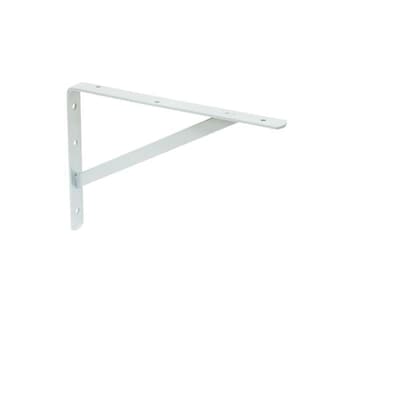So suppose I want to make a single shelf protruding from a wall and to place a heavy object on it (Figure 1). A shelf like this would fail (assuming no internal mounting that penetrates into the wall).
As such, in an ideal scenario, I would want to place a vertical column/beam directly below the shelf to help support the weight on top (Figure 2).
Yet this isn't always ideal due to other objects below the shelf. So in this case I've seen angle braces being used below the shelf (Figure 3). Now generally, from what I've seen, these angle braces are roughly 45 degrees from vertical. Why is that the common angle?
I haven't been able to find any calculations online to determine the ideal or maximum angle here. What would be the maximum (from vertical) angle that a shelf like this could support? I understand that there are many variables at play including the distance that the shelf hangs from the wall, the thickness and strength of the shelf material, the weight of the object on top of it, etc., but is there a rough calculation that could be used?

